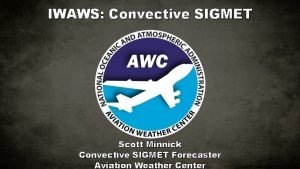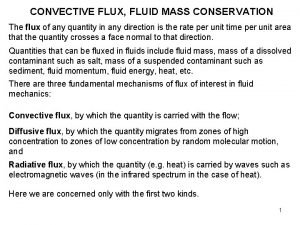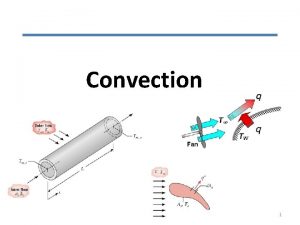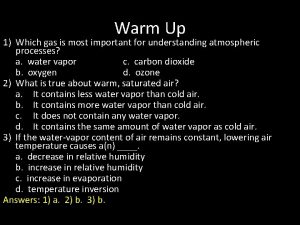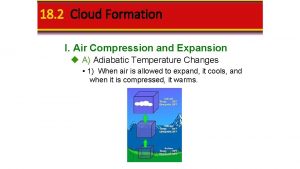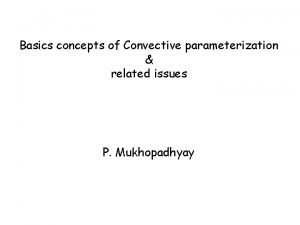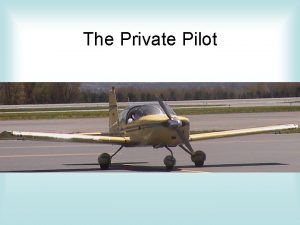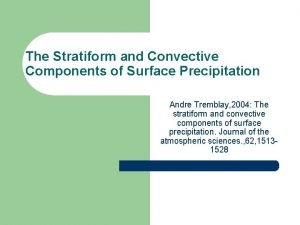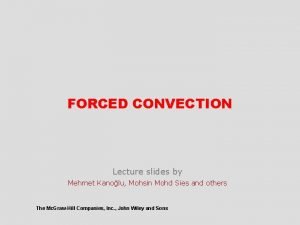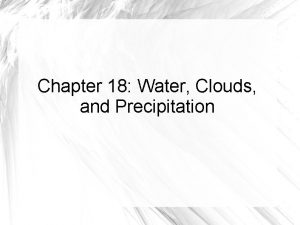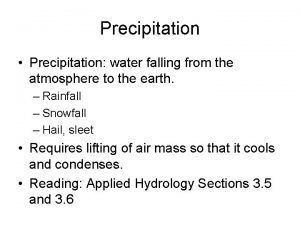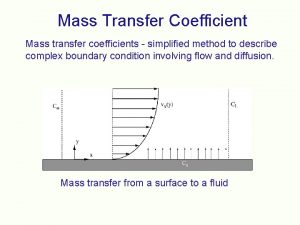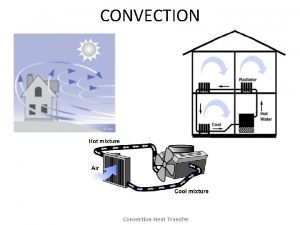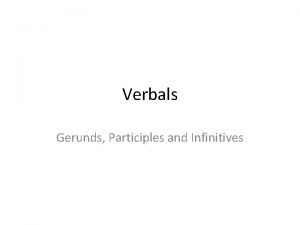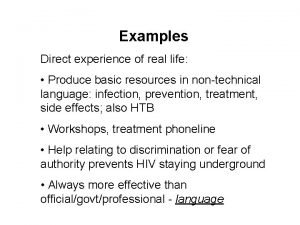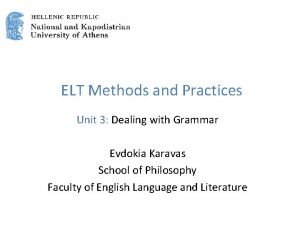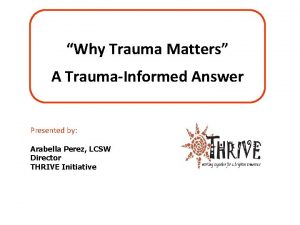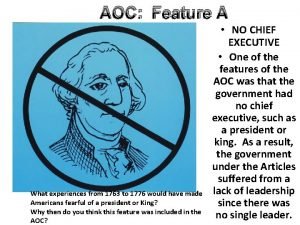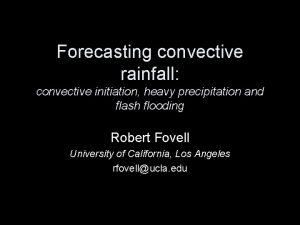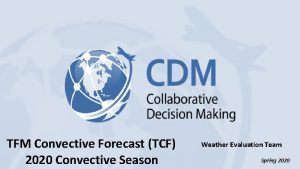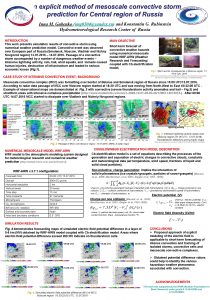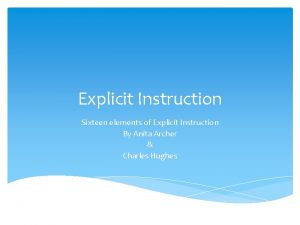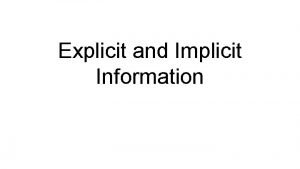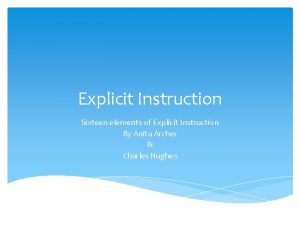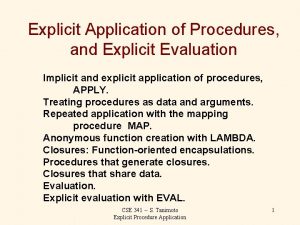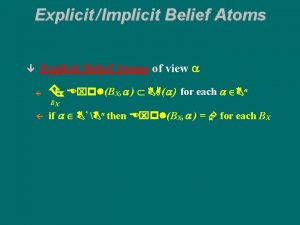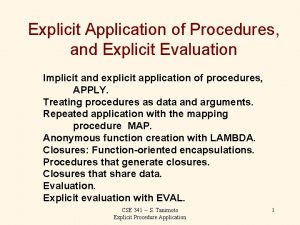Experiences with 0 36 h Explicit Convective Forecasting
































- Slides: 32

Experiences with 0 -36 h Explicit Convective Forecasting with the WRF-ARW Model Morris Weisman (Wei Wang, Chris Davis) NCAR/MMM WSN 05 September 8, 2005

Composite NEXRAD Radar 00 UTC 6/10/03 - 12 UTC 6/11/03

WRF Realtime Convective Forecasting May 1 – July 31 4 km 00 UTC -- 36 h 2003, 2004, 2005

WRF Real-time Forecasts: 2004, 2005 § 4 -km from 0000 UTC - 36 h §Version 1. 3 (2. 0. 3. 1) §Eta initial and boundary conditions (40 km) §Physics: Lin et al. (5 cat. ) microphysics (WSM 6) YSU PBL (first-order closure) Noah LSM (HRLDAS) § 2000 km X 2000 km domain / 2800 km X 2600 km domain § 5. 0 h (6. 5 h) on 128 (192) IBM Power-4 processors

Real-time WRF 4 km Forecast Initialized 00 UTC 9 June 03 Reflectivity forecast Composite NEXRAD Radar

Real-time WRF 4 km Forecast Initialized 00 UTC 10 June 03 Reflectivity forecast Composite NEXRAD Radar

Consider the 24 -30 h forecast challenge (i. e. , the next diurnal cycle). How does the 4 km WRF-ARW ‘’guidance’’ compare to the 12 km operational ETA?

May 30, 2004 Radar 03 GMT 4 km WRFARW 03 GMT 27 hr 06 GMT prec. 12 km ETA 30 hr

Overall Forecast Good: OK: Bad: WRF RADAR


How well does 4 -km WRF represent the climatological behavior of convection? (e. g. , diurnal cycle, episodes)

Longitudinal 1 hr Precip. May 10 -31, 2004 Stage IV WRF

Diurnal Average Frequency: May 10 -July 31 2004 Stage IV 4 km WRF

Diurnal Average 3 hr Precip. Stage IV 4 km WRF 12 km ETA

Initialized 04 June 2005 00 UTC Reflectivity forecast Composite NEXRAD Radar

24 h forecast Valid 00 UTC 06/05/05 4 -km ARW 4 -km NMM 2 -km ARW Nexrad

0500 UTC 29 April 2005: 1 km model reflectivity, NEXRAD BREF ARW 4 NMM 4 ARW 2 BREF

Progress 4 km WRF-ARW simulations exhibit: § A surprising ability to forecast mesoscale convective systems (MCS) out to 36 h ( strongly controlled by 12 -km ETA forcing) §A demonstrated skill at depicting MCS mode (bow echoes, mesoscale convective vortices, supercell lines) §A more accurate depiction of diurnal cycle and precipitation episodes §An ability to spin-up convective systems within 3 -4 h from a cold start.

Challenge: • QPF problematic (too much convective precip) • Stratiform regions appear too small (microphysics? ) • Convective systems often fail to decay (BL evolution? ) • Initialization (data assimilation) • Verification methods

WRF-ARW 2005 real-time forecasts can be found at: http: //box. mmm. ucar. edu/projects/wrf_spring/ http: //rain. mmm. ucar. edu/mm 5/ Also archived at: http: //www. joss. ucar. edu/wrf-2004/catalog/ http: //www. joss. ucar. edu/wrf-2005/catalog/

OBS 24 hr precipitation verification 4 km WRF Valid 6/10/03 12 UTC 10 km WRF 12 km ETA

4 km WRF 12 h Precipitation Forecast Valid 10 June 2003 12 Z Lin, et al. Scheme WSM-6 Scheme Reisner Scheme SB 2004 Scheme NCEP Stage 4 Data Total Precipitation (mm) (Axel Seifert, 2004)

4 km WRF 12 h Reflectivity Forecast Valid 10 June 2003 12 Z Lin, et al. Scheme WSM-6 Scheme Reisner Scheme SB 2004 Scheme NEXRAD Composite Column Max Reflectivity (d. BZ) (Axel Seifert, 2004)

Lin WSM-6 12 h Surface Theta Reisner SB 2004

Sounding comparison: 24 h forecast valid 00 Z 24 May at DDC ARW 4 Good forecast… Model Raob NMM 4 Model Raob PBL too shallow, cold, & moist… clouds just broke up!

Sounding comparison: 24 h forecast valid 00 Z 18 May at DDC ARW 4 Model Raob NMM 4 Too dry in PBL, too moist above; Where is the PBL top? Good forecast… Raob Model

Sounding comparison: 24 h forecast valid 00 Z 28 April at OUN ARW 4 Raob Good in PBL, but CIN layer is washed out Model NMM 4 Raob Model PBL too shallow and moist, but CIN layer looks good

24 h Reflectivity Forecast valid 4 -30 -05 00 Z 4 km WRF-ARW 4 km WRF-NMM 2 km WRF-ARW Radar

Diurnal Average (2003) 4 km 10 km

Model Physics in High Resolution NWP Physics “No Man’s Land” 1 Resolved Convection 3 -D Radiation LES 10 100 km Cumulus Parameterization Two Stream Radiation PBL Parameterization

Convective Mode/Intensity CAT 3: severe, well organized (> 1 in) CAT 2: some organization (. 251. 0 in) CAT 1: weak, disorganized (<. 25 in) WRF ETA

 Localized convective lifting definition
Localized convective lifting definition Adds sigmet
Adds sigmet Convective flux
Convective flux Convective heat transfer coefficient formula
Convective heat transfer coefficient formula Orographic lifting
Orographic lifting Convective clouds
Convective clouds Localized convective lifting
Localized convective lifting Convective parameterization
Convective parameterization An almond or lens-shaped cloud which appears stationary
An almond or lens-shaped cloud which appears stationary Stratiform precipitation
Stratiform precipitation Kanolu
Kanolu Frontal wedging examples
Frontal wedging examples Convective rain
Convective rain Mass transport
Mass transport Convection heat transfer equation
Convection heat transfer equation Cs_rs11-iiia-1
Cs_rs11-iiia-1 Traveling might satisfy your desire for new experiences.
Traveling might satisfy your desire for new experiences. Artistic experiences
Artistic experiences Using job experiences for development assumes that
Using job experiences for development assumes that Expériences professionnelles
Expériences professionnelles Importance of social studies
Importance of social studies Direct purposeful experience
Direct purposeful experience Traveling might satisfy your desire for new experiences
Traveling might satisfy your desire for new experiences Most employee development occurs through:
Most employee development occurs through: Https://quizlet.com
Https://quizlet.com Direct experience list
Direct experience list An account of the personal experiences of an author
An account of the personal experiences of an author Meaningful learning experiences examples
Meaningful learning experiences examples Adverse childhood experiences study
Adverse childhood experiences study What experiences from 1763 to 1776
What experiences from 1763 to 1776 Quote the passage when the creature experiences
Quote the passage when the creature experiences Guiding play and puppetry experiences
Guiding play and puppetry experiences Contrived experiences
Contrived experiences

